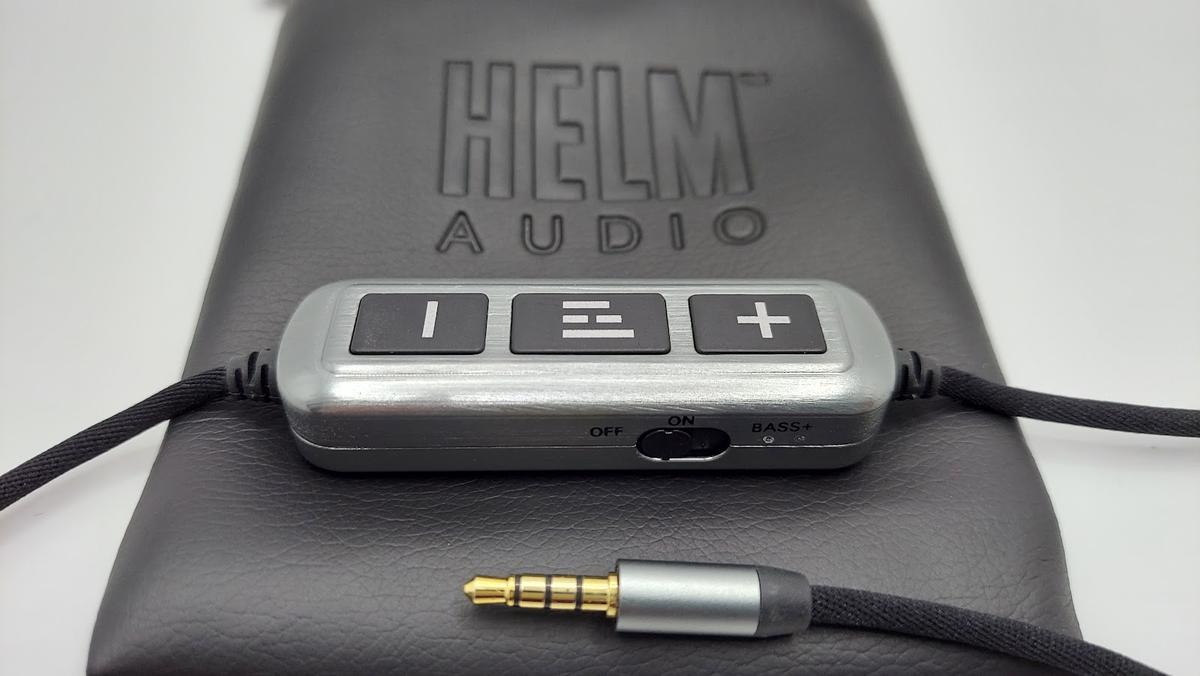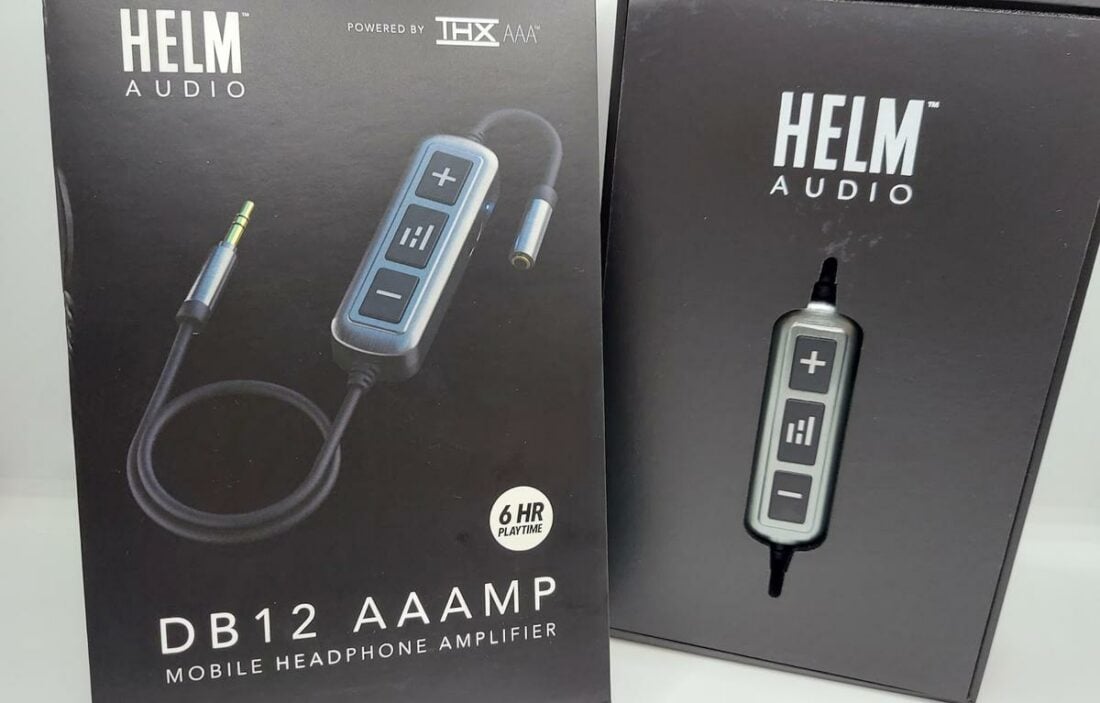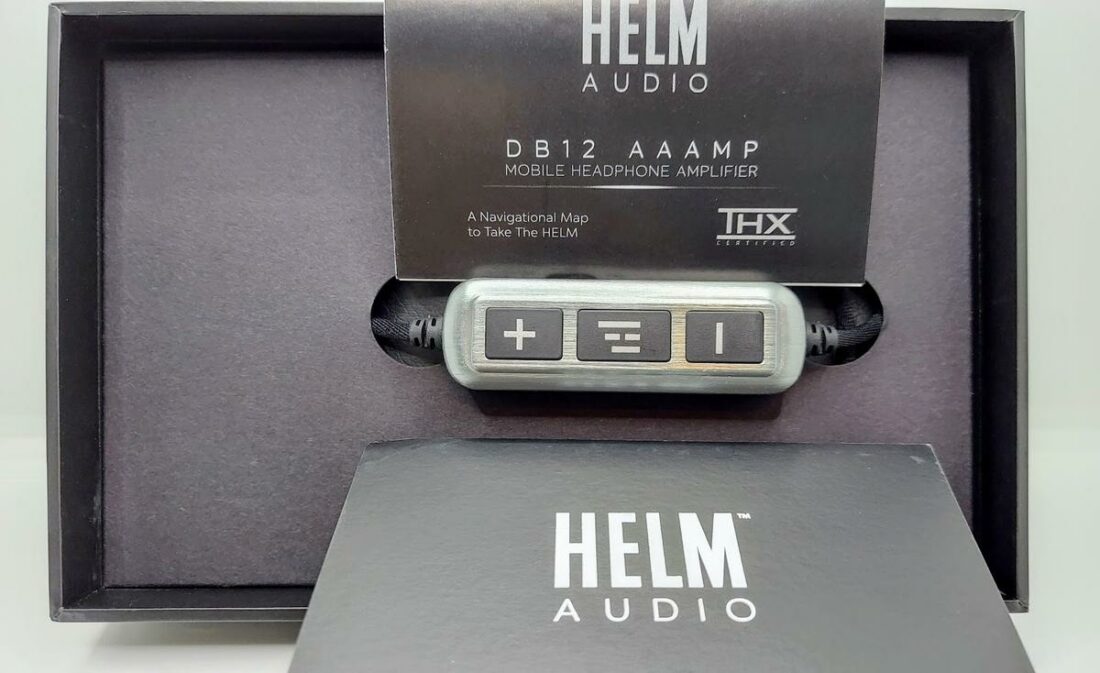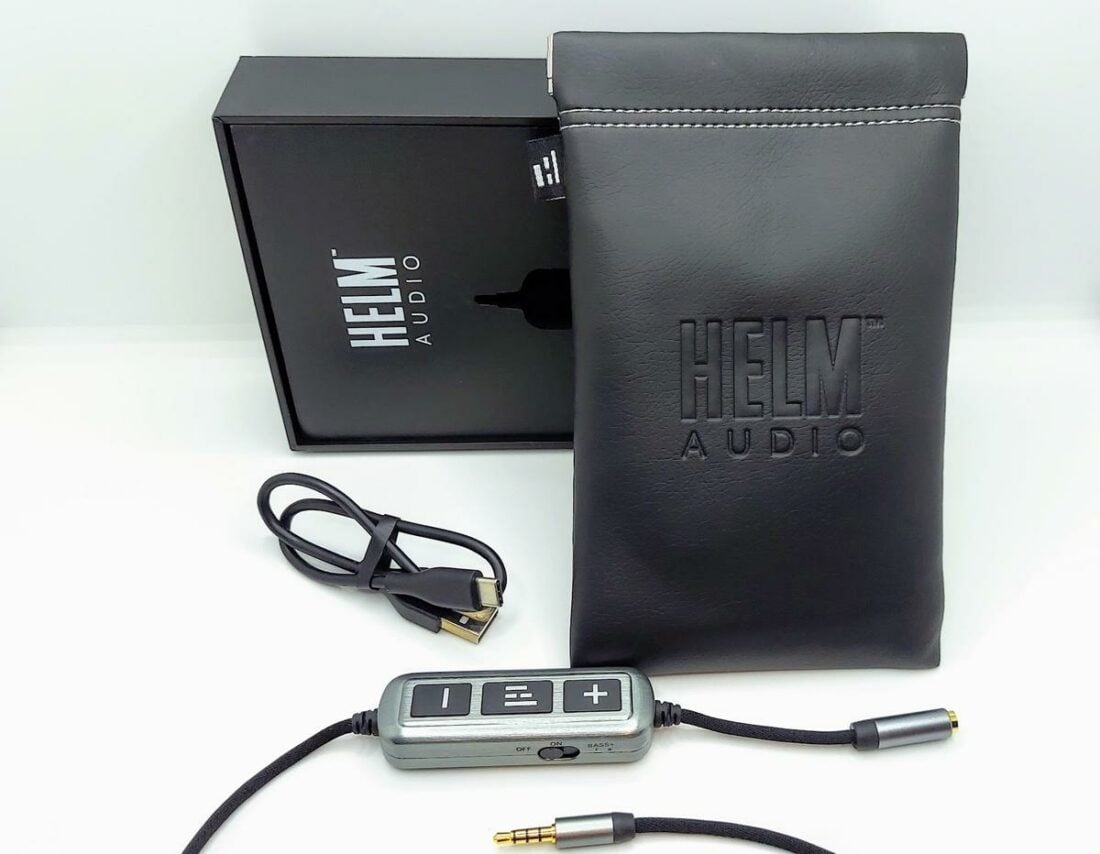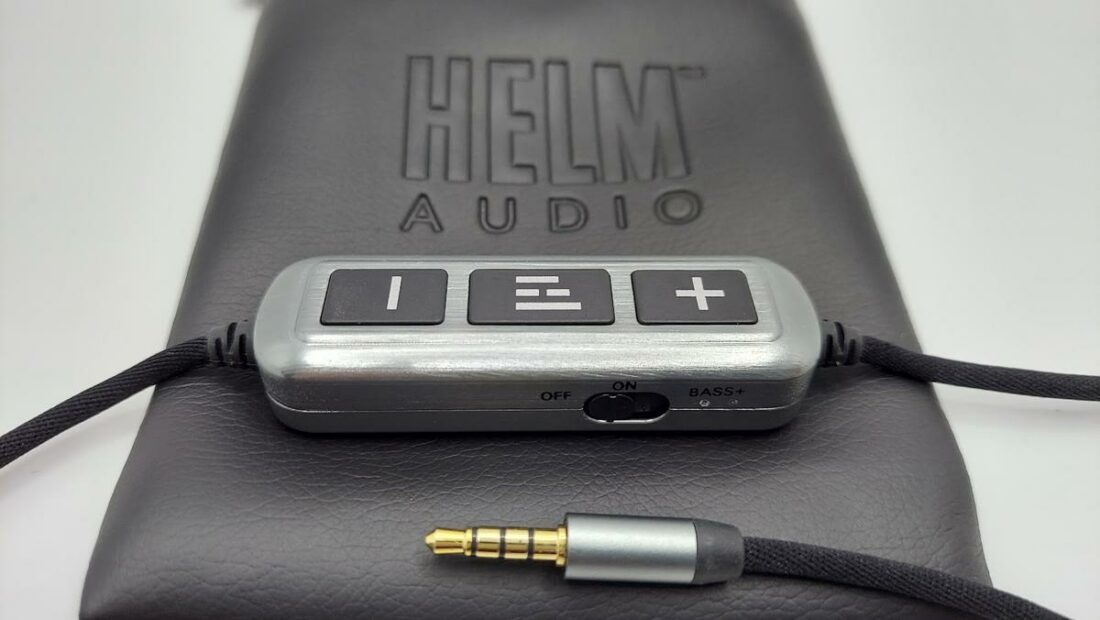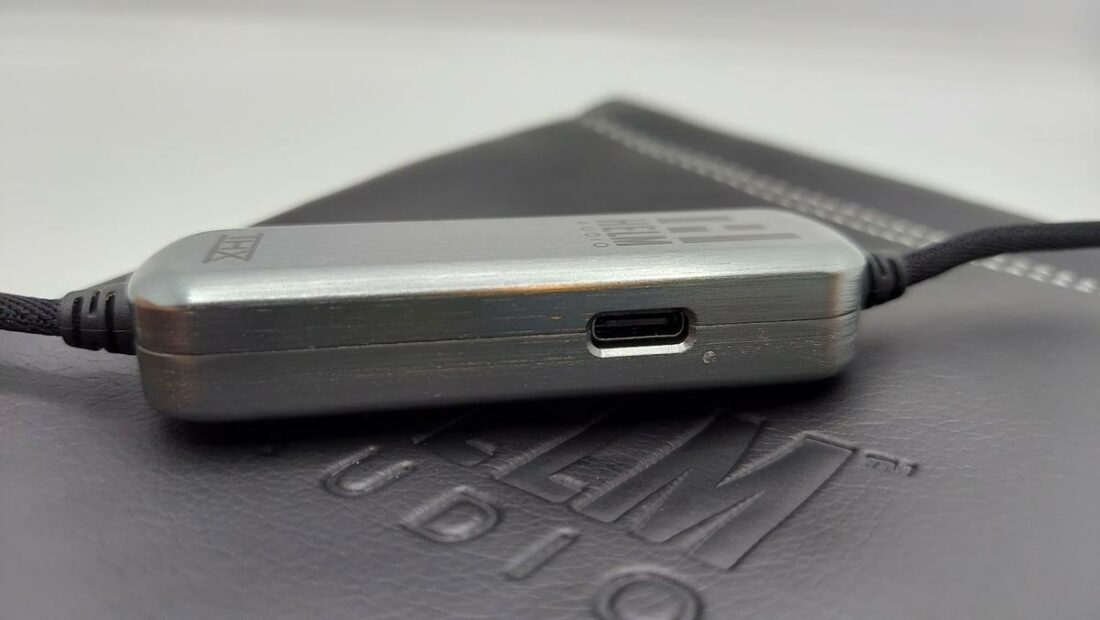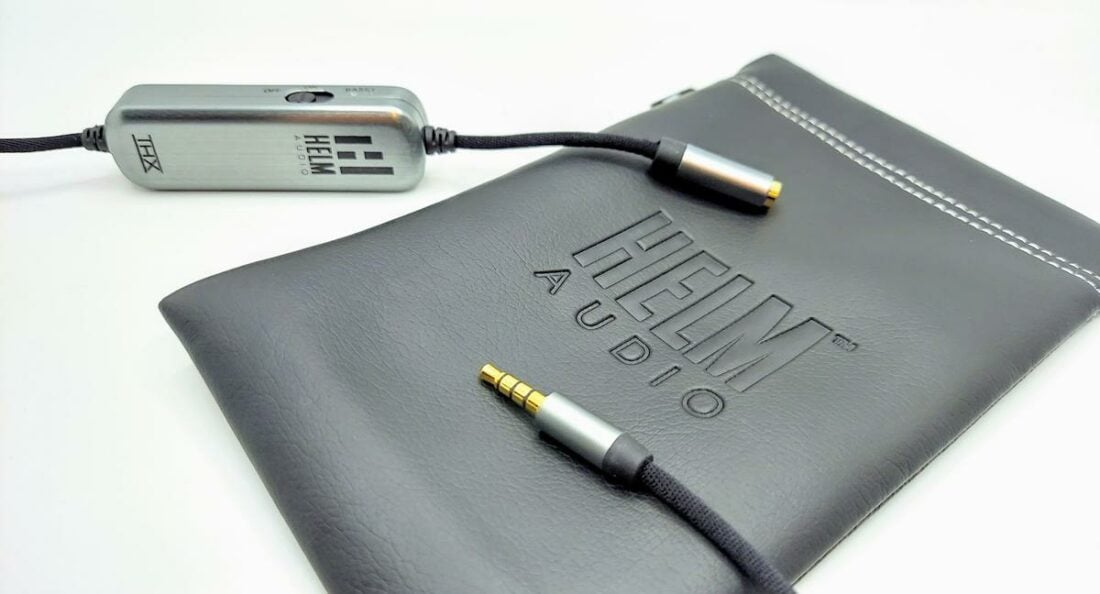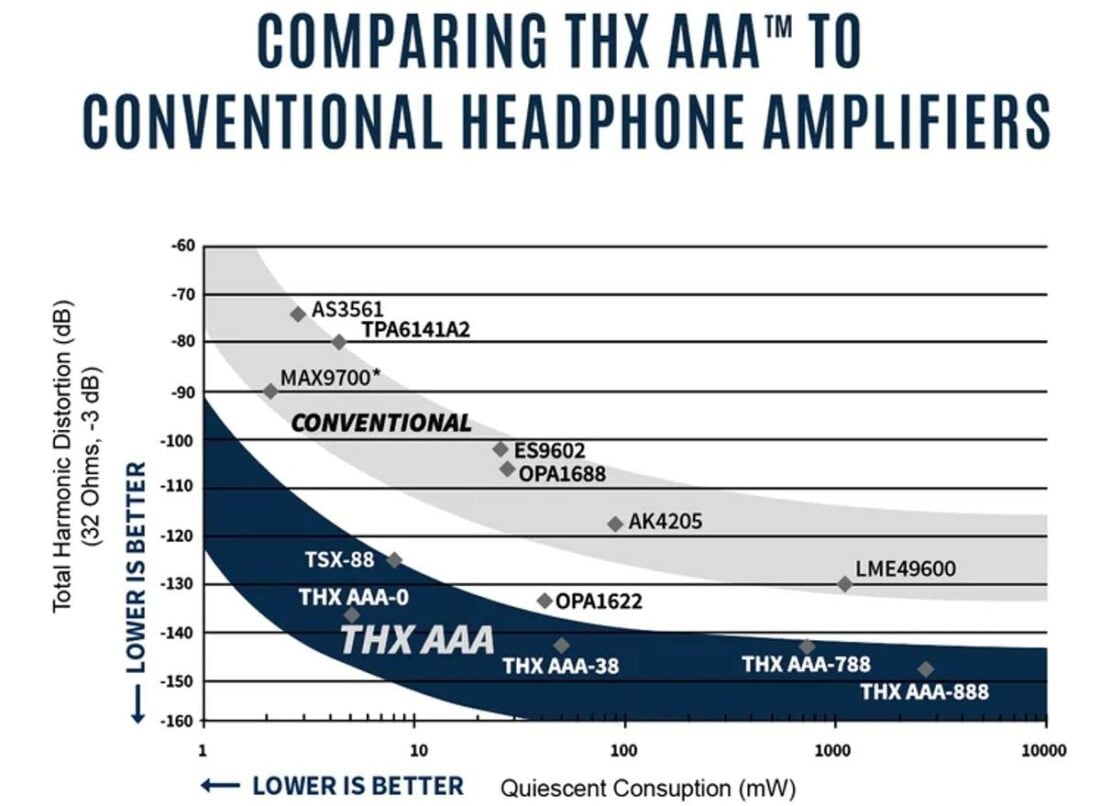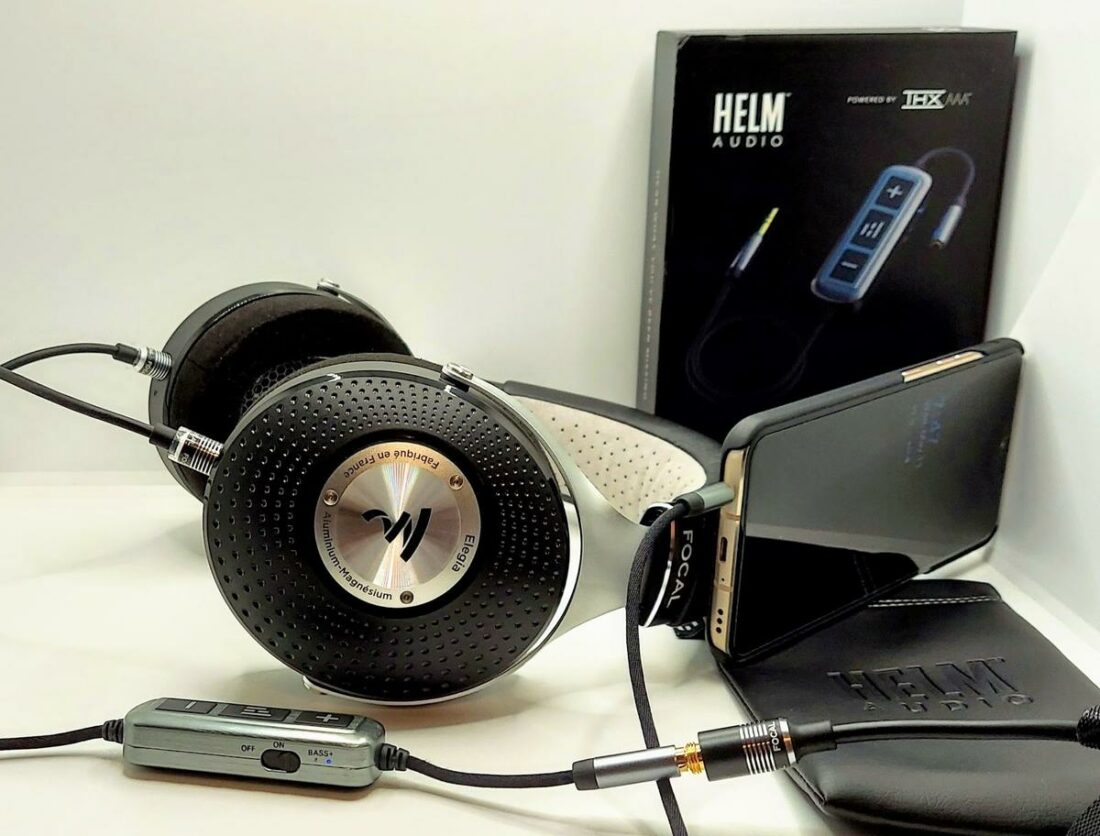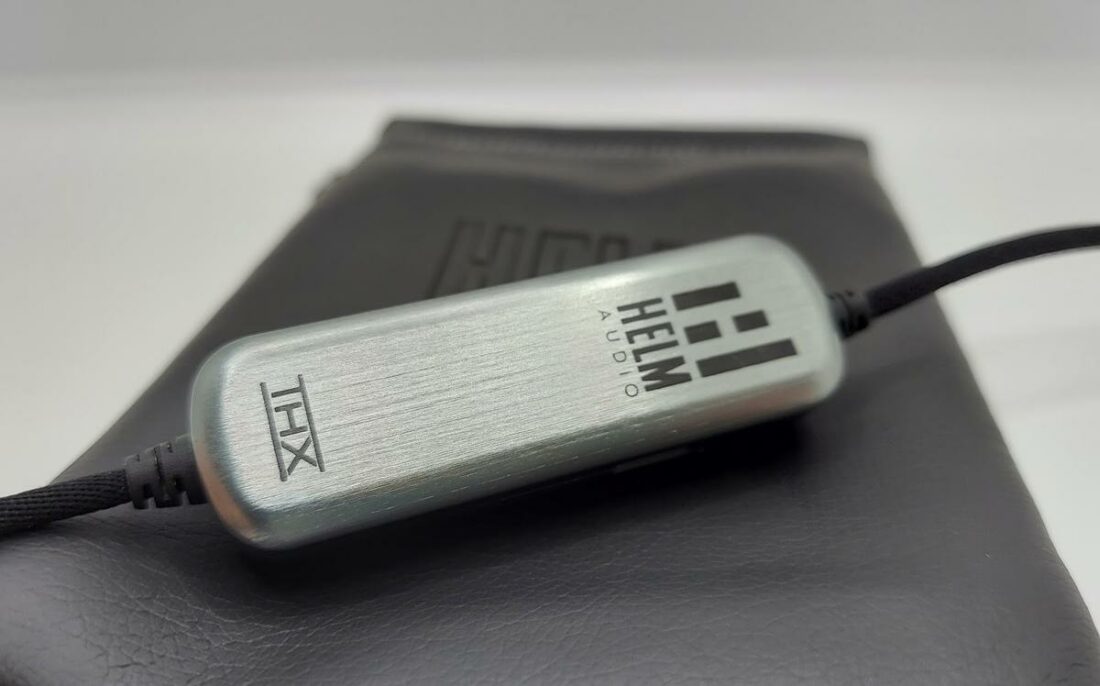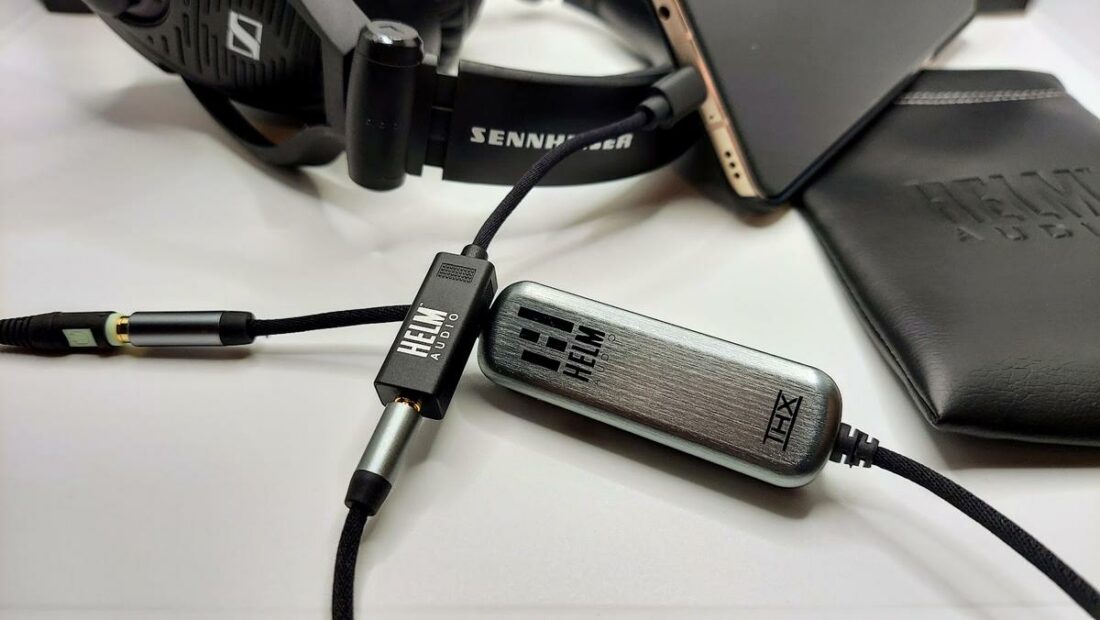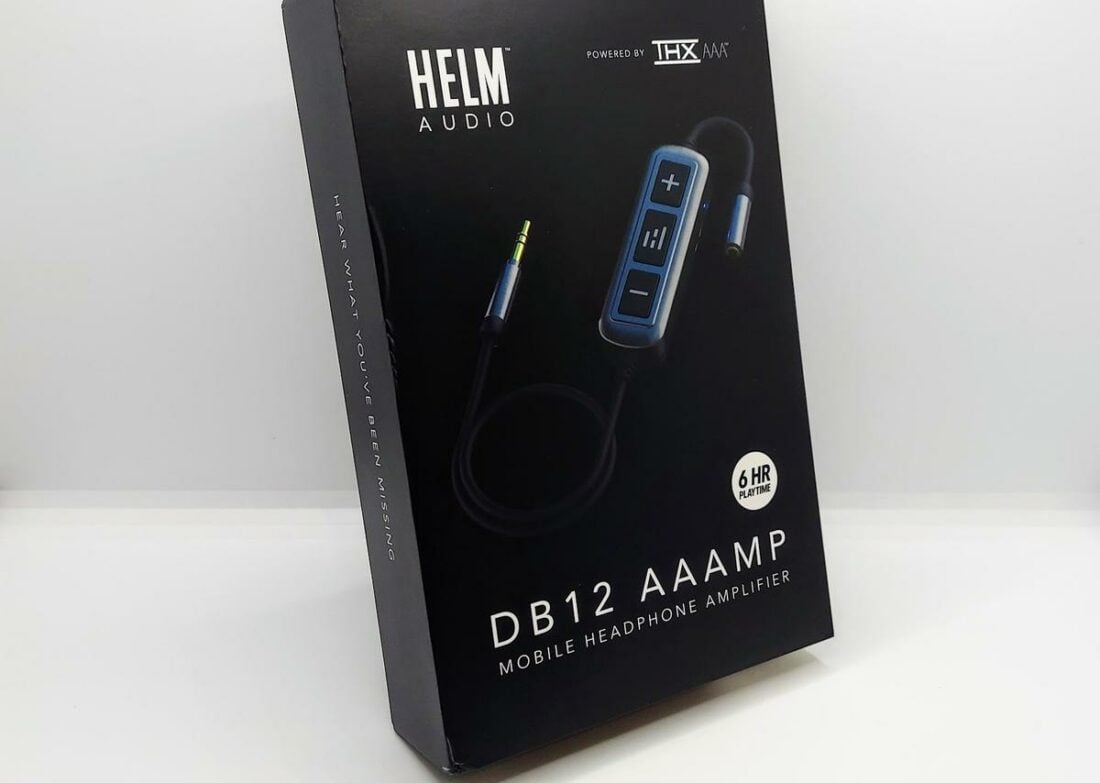If you made it this far, you likely know what this thing is – a portable audio amplifier, with this form factor being called a “dongle.” In general, dongles are devices that generate more clean power and sound than you might get from your mobile audio source (e.g., smartphone, tablet, laptop). The HELM DB12 AAAMP mobile headphone amplifier is the world’s first portable in-line amplifier powered by THX. Its name highlights two significant attributes: +12 dB of gain/power, provided by an internal THX-certified AAA (Achromatic Audio Amplifier) amplifier. The DB12 AAAMP’s signal chain is analog from input to output. There is no DAC (Digital Audio Converter) on board – it’s an all-analog mobile amplifier with near zero distortion. Do you need one? Maybe, or maybe not, as the answer depends on multiple factors. Follow along; your answer awaits!
First Impressions
The DB12’s compact, attractive aluminum case features three large, easy-to-feel buttons and a slider switch. Housing, fit, and finish feel high quality. It will not be mistaken for a generic dongle amplifier.
Company Overview
Founded in 2017 by a team of industry veterans with a passion for delivering better sound quality across all mobile devices, HELM Audio™ Ltd. is a British-American audio innovation and technology company.
Technical Specifications
Form: Dongle-type portable headphone amplifier Connections: Input: Stereo TRRS 3.5 mm male connector (to connect to a source device) Output: Stereo TRRS 3.5 mm female connector (to plug headphones into) Performance: Amplifier: THX’s AAA Amplifier, THX Certified THD+N: -102 dB, 32 ohms, 10 mW: 0.0008% -102 dB, 32 ohms, 5 mW: 0.0008% -109 dB, 10 Kohms, 0/049 mW: 0.00035% SNR: 141 dB, 300 ohms, <1% THD Crosstalk: -91 dB, 10K ohms: 0.0028184% Gain: +12 db (full range) Independent bass boost: +6 db (60-100 Hz frequencies) Output Power: 109mW @ 16 ohms, <0.1% THD (watts per channel) 90mW @ 32 ohms, <0.1% THD (watts per channel): important note, this is accurate per HELM as of this publication. The output power specifications published in their documentation for 32 ohms is incorrect and pending correction. Output impedance : <0.4 ohms Frequency Response, 20 Hz – 20 kHz with 32 ohm load: +0.01 / -0.2 dB On-device controls: hardware volume control (rocker switch) with 32 steps of volume scale Power Supply: internal USB rechargeable battery, USB-C connection Battery Life: 6-8 hours in use Size: 70mm total length x 22mm x 12mm (2.75 x 0.57 x 0.88 inches) Weight: 30.55 grams (1.08 ounces)
Packaging
A serious and sturdy two-piece cardboard black box opens to reveal a foam cutout securing the DB12. Below are the accessories, including a premium carrying case, which is much more than large enough to carry approximately 5 of the DB12. Or, more practically, one DB12 and 1-2 pairs of IEMs (in-ear monitors) – in their own cases!
In the box
HELM Audio DB12 AAAMP USB-C cable Soft leather-like embossed carrying bag Quickstart guide
Design
The DB12’s strong, compact, lightweight two-piece aluminum body is built well with tight tolerances and no loose parts. The rounded corners make for a nice feel in hand. It is smooth and resistant to fingerprints. Large black plastic inline volume and playback controls for compatible devices are slightly raised from the body, making them easy to locate and identify without looking. There are three physical buttons with excellent positive feedback: volume up, volume down, and a multifunction button. The upside and downside of the small 3-position plastic slider switch are that it’s stiff and requires effort and precision pressure. Depending on your fingers, this slider can be challenging to shift into place and not overshoot the position you are going for. Once there, it will not move on its own or with an accidental swipe. The aluminum dissipates heat and is remarkably resistant to fingerprinting and smudging (refrigerators claiming to do the same could learn a lesson or two from the DB12 materials experts). The DB12 as a physical device is noiseless and generates a slight warmth in use which I never find bothersome.
Cable
The high conductive silver coiled cables that extend from both sides of the unit are wrapped in cloth, flexible yet sturdy, and non-microphonic. The cable’s length from the source to the DB12 is a very long 24”, and the distance from the body to the headphone adapter is 2”. This ensures that you can carry a phone or player in your pocket or bag and still access the inline controls without taking the device out.
Internals
The DB12 is powered by THX AAA technology to deliver studio-quality analog (gloriously not digital) amplification to any wired headphones. It delivers +12 dB of zero distortion volume gain. Additionally, the HELM DB12 AAAMP Mobile Headphone Amplifier is THX Certified. For Certified headphone listening products, THX engineers analyze everything from output levels, frequency response, signal-to-noise, distortion, and bass management to recreate high-impact cinema sound and best-in-class audio fidelity.
DB12 AAAMP Performance and Sound
Regarding performance, I have three main priorities with DAC/amps:
Power
The DB12 produces a healthy amount of power for a tiny battery-powered dongle DAC/amp. 12dB of power gain from 109mW @ 16 ohms / 90mW @ 32 ohms may not sound like a lot, especially compared to other dongles that are powered by USB-C. For most headphones, including those with low-sensitivity and high-impedance that are hard to drive, the DB12 delivers adequate power on the go. My testing was successful with a range of Sennheiser headphones (58x Jubilee, HD650, HD599SE), the AKG Q701, and the Beyerdynamic DT990 Pro. For almost all IEMs, the power available is far more than they will require (or your eardrums should safely be exposed to). While the DB12 will not introduce any noise, too much power will definitely cause distortion – and hearing damage. Be cautious with volume increases while you calibrate to how much extra power is at your disposal.
Noise
A critical test for me, given my priorities above, is to check for unwanted noise. I plug in the headphones/IEMs and turn the volume up on the original source to maximum (with no signal playing), followed by increasing the volume on the amplifier to maximum, and I listen for hiss or noise.
Sound
The primary benefit of the DB12 is significant extra power with a claimed ability to resolve/reduce up to 80% of the source THD output, which can clear up the sound significantly from low-quality sources thanks to THX. It’s crucial to note that the DB12 will not alter frequency response (sound reproduction). This means it will not alter or significantly improve poor quality sources beyond cleaning up signal noise. If you want a change in quality plus the power boost, it’s best to pair the DB12 with the BOLT, HELM’s DAC/amp with extensive capabilities. The BOLT produces approximately 60mW @ 32 ohms, raising their combined total power output to approximately 150mW @ 32 ohms when paired. Depending on your preferences and gear, the bass boost may be a huge hit for you with endless grins or quite the opposite. The +6 dB lift in the 60-100 Hz frequencies is a bit of a blunt instrument, offering no variable steps in boost or adjustment of the application to different frequencies. For reference, +6 dB is a LOT. Far from subtle, this comes with many caveats. If you have headphones/IEMs that are factory tuned with boosted bass frequencies, such as many “V”-shaped sets, the DB12’s big boost may overwhelm the drivers (i.e., cause stress beyond the driver’s capabilities), and therefore create distortion (and possibly damage) at high volumes. There may also be a resultant bleed into the lower midrange that clouds vocals and reduces overall clarity. This is not a huge issue for the most part unless you have a highly tuned ear or are listening at loud volumes. On the other hand, for headphones like all the bass-light open-backs I mentioned above, the DB12’s boost can be a switch-inspired revelation for many who are not adept with EQ or modding. I would be curious to hear a DB12 with bass boost extending approximately 20 Hz on either side of its range, at about +3 dB to smooth it all out and blend better into the upper bass and lower mids. If you want precision, skip the bass boost switch and use multi-band or parametric EQ.
Where to Buy
Conclusion
Let’s revisit the original question: do you need a portable amplifier dongle, specifically the DB12? The DB12 has some distinct real-world advantages:
it will not occupy your mobile phone’s USB-C port if you have a 3.5mm jack has its own internal rechargeable battery supply and will not draw power from your source device can be used while charging or plugged in via USB-C
If your audio world is compatible with 3.5mm jacks and plugs, the DB12 is a super easy and convenient way to increase power anywhere without having to upgrade your source. In short, I encounter circles with 3.5mm holes all the time in my world. This DB12 AAAMP has earned a place in my “take with” audio gear every day.
